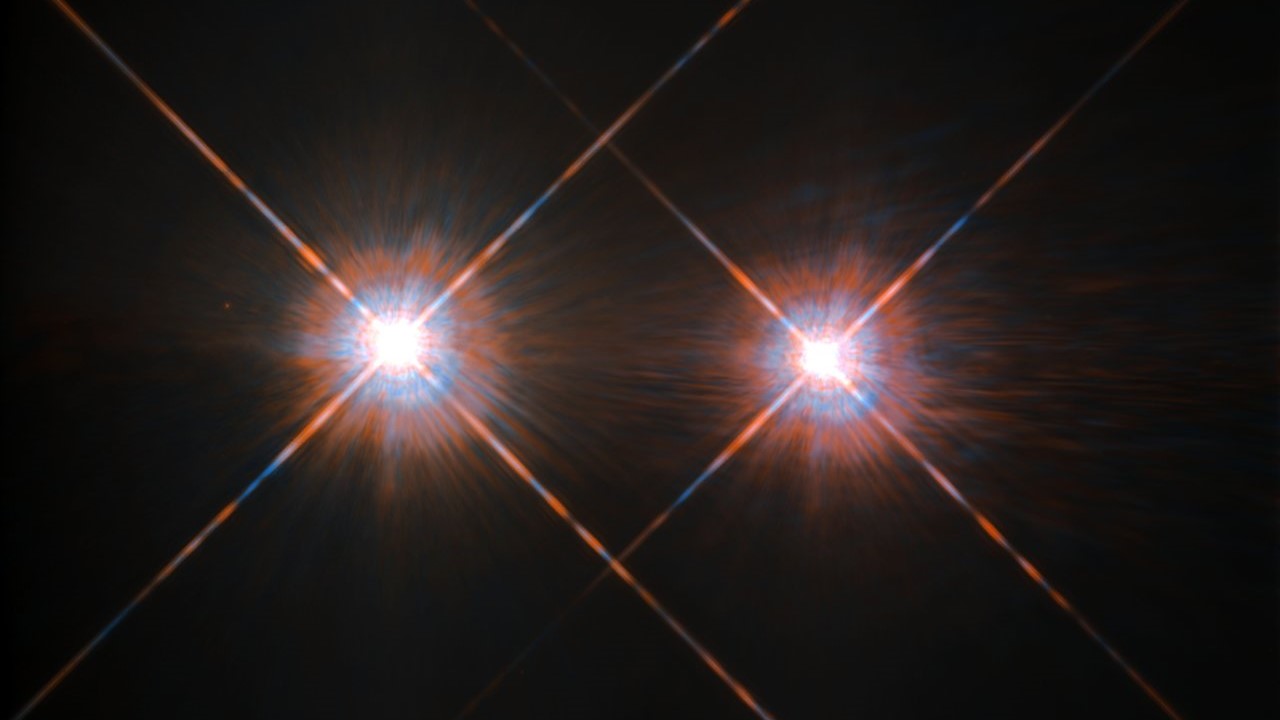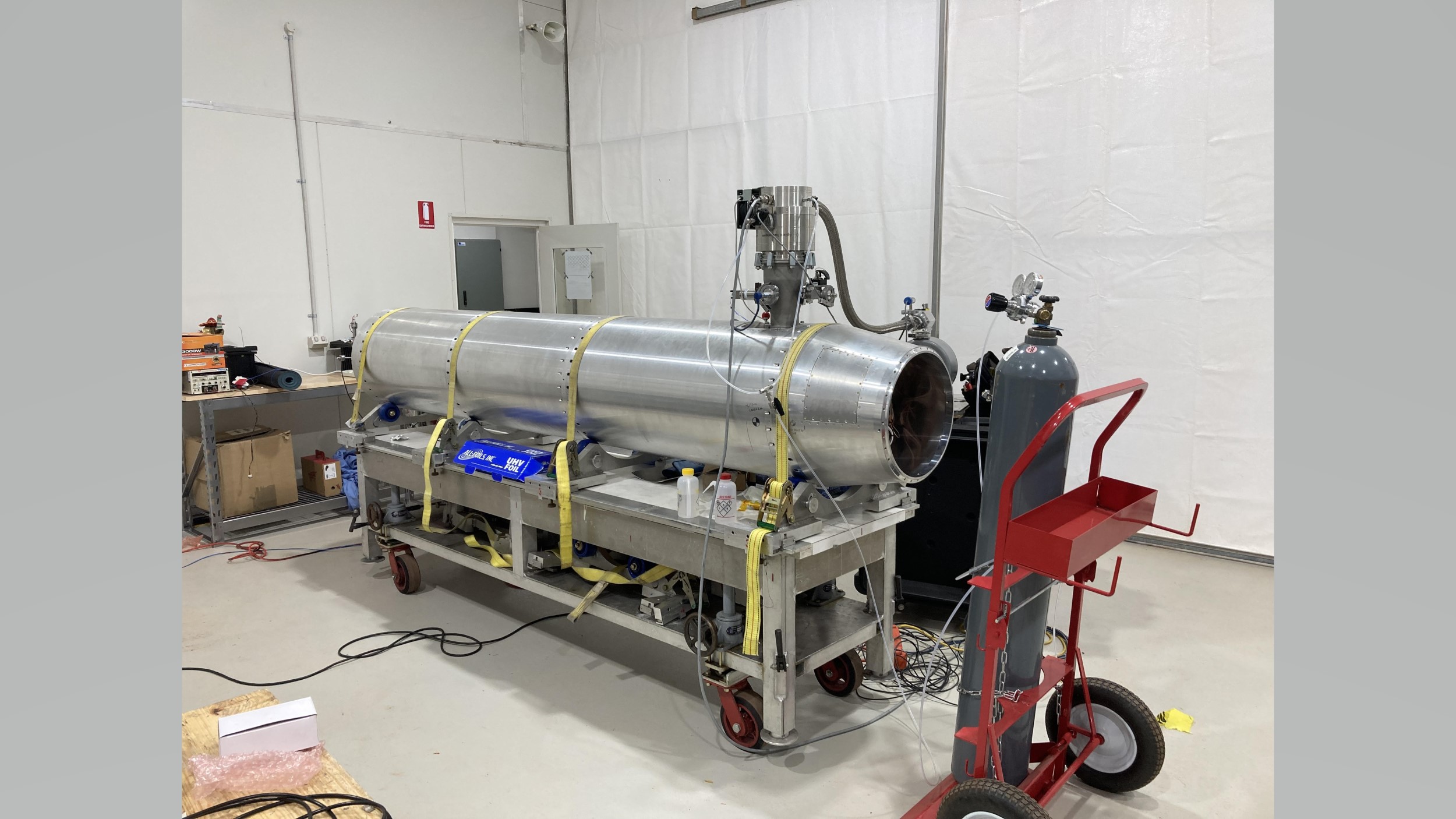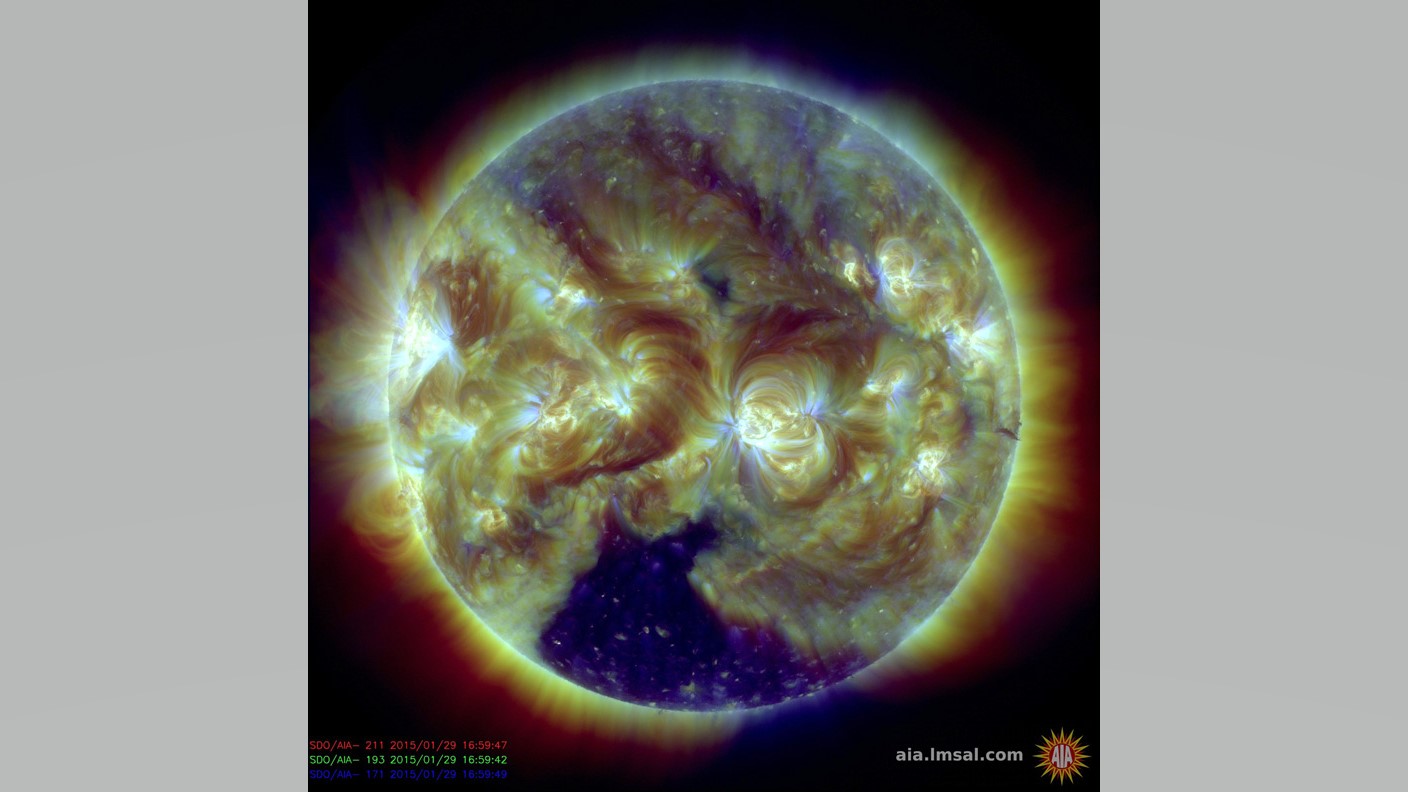NASA sounding rockets blasting off to assess Alpha Centauri habitability
The launches from an Australian commercial launch facility are observing the sun's nearest stars in ultraviolet light.

Two sounding rockets are launching from Australia this month, carrying experiments designed to measure whether the ultraviolet light coming from the stars of the Alpha Centauri system could be harmful to any potential life on planets orbiting them. The research will also teach us about how normal — or not — the sun is.
Alpha Centauri, just 4.3 light-years away, comprises two main stars, Alpha Centauri A and Alpha Centauri B (which form a binary pair), as well as a third star, Proxima Centauri. Although no planets have been positively identified orbiting either Alpha Centauri A or B, if any do exist, ultraviolet light from their stars may have a strong bearing on whether they host life.
Just the right amount of ultraviolet light can break up simple organic molecules, such as methane, prompting the molecular fragments to reform as more complex molecules necessary for life. On the other hand, too much ultraviolet can disassociate water vapor, making it subject to being stripped from a planet's atmosphere by the solar wind and leaving the planet dry and barren, like Mars is today.
Related: NASA to launch 3 sounding rockets from Northern Territory in boost for Australian space efforts
"Understanding ultraviolet radiation is extremely important to understanding what makes a planet habitable," Brian Fleming, an astrophysicist at the University of Colorado, Boulder, said in a statement. Fleming is the principal investigator for one of the missions, the Dual-channel Extreme Ultraviolet Continuum Experiment (DEUCE). The other experiment launching on a sounding rocket is called the Suborbital Imaging Spectrograph for Transition region Irradiance from Nearby Exoplanet host stars (SISTINE). Sounding rockets fly on a parabolic trajectory, spending perhaps 20 minutes in space before reentering the atmosphere, meaning each experiment will get only a short time to make observations.
SISTINE launched first, on Wednesday (July 6), from the Arnhem Space Centre in Australia's Northern Territory. It was the second-ever launch from the privately owned commercial space center following June's launch of NASA's X-ray Quantum Calorimeter. If all goes well, DEUCE will blast off on July 12. Each mission will ride a suborbital path on NASA's two-stage Black Brant IX sounding rocket.
The missions must launch from the Southern Hemisphere because the Alpha Centauri system is not visible above a latitude of 29 degrees north, and just skirts the horizon from Florida, whereas it is high in the sky as seen from Australia. SISTINE gathers data at longer far-ultraviolet wavelengths while DEUCE complements it by looking at shorter extreme-ultraviolet wavelengths, with some overlap between the two experiments so that the data can be calibrated and used as one data set.
Get the Space.com Newsletter
Breaking space news, the latest updates on rocket launches, skywatching events and more!

Observing stars in ultraviolet is difficult, because the ozone layer in Earth's atmosphere blocks ultraviolet light, forcing scientists to send ultraviolet telescopes into space. Meanwhile, the interstellar medium of gas and dust between the stars also absorbs ultraviolet light, so any stars that are an appreciable distance away cannot be observed very clearly in ultraviolet light.
As such, we have full ultraviolet observations for only one star, the sun. But how typical are the sun's ultraviolet emissions? Astronomers do not know; they need ultraviolet readings from other stars to figure that out. Alpha Centauri A and B make good targets for study, for two reasons. First, they are close, so their ultraviolet light is not attenuated by the interstellar medium. Second, they have masses and temperatures similar to the sun.
"Looking at Alpha Centauri will help us check if other stars like the sun have the same radiation environment or if there are a range of environments," Kevin France, an astrophysicist at the University of Colorado, Boulder, and principal investigator of SISTINE, said in the statement.

The three sounding-rocket launches from the Arnhem Space Centre are the first launches that NASA has conducted from a commercial spaceport outside the United States. (NASA has launched from Australia before — most recently, in 1995 — but those rockets blasted off from the Royal Australian Air Force Woomera Range Complex.)
"This commercial launch range in Australia opens up new access to the Southern Hemisphere's night sky, expanding the possibilities for future science missions," Thomas Zurbuchen, associate administrator for NASA's Science Mission Directorate, said in a statement.
Follow Keith Cooper on Twitter @21stCenturySETI. Follow us on Twitter @Spacedotcom and on Facebook.
Join our Space Forums to keep talking space on the latest missions, night sky and more! And if you have a news tip, correction or comment, let us know at: community@space.com.

Keith Cooper is a freelance science journalist and editor in the United Kingdom, and has a degree in physics and astrophysics from the University of Manchester. He's the author of "The Contact Paradox: Challenging Our Assumptions in the Search for Extraterrestrial Intelligence" (Bloomsbury Sigma, 2020) and has written articles on astronomy, space, physics and astrobiology for a multitude of magazines and websites.









